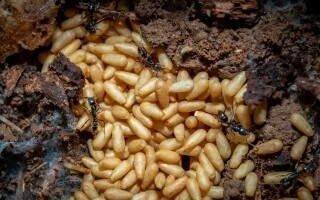
Recently, scientists have expressed concerns about the potential dangers of the Asian honeybee, which could be deadly for individuals with heightened sensitivity. Its sting causes serious symptoms such as tongue or throat swelling, respiratory distress, heart palpitations, nausea, vomiting, skin reactions like hives, rashes, redness or pallor, drops in arterial pressure, headaches, malaise, and psychological symptoms. Professor Dan Suiter, an expert in venom from the University of Georgia, warns about the increasing threat of this insect, noting that although the honeybee is non-aggressive by nature, its sting is unavoidable when experiencing an allergic reaction. Suiter stated: "The situation becomes particularly dangerous if the sting of this insect threatens the lives of individuals with heightened sensitivity." This small killer hides in tree trunks, branches, and under stones, with its activity peaking in July and August. This tiny organism, no larger than three-quarters of a dime, is causing growing concerns within the medical and scientific community in the USA. Typically, honeybees are regarded as a nuisance, especially when they invade homes or businesses. However, the Asian honeybee represents a more serious risk—a risk that extends beyond the boundaries of simple nuisance. According to the American newspaper 'New York Post', this menace has spread throughout the Southeast USA since 1932, establishing itself in Georgia and surrounding areas. Almost 90 years after its initial appearance, the Asian honeybee has again become a headline topic. Only in 2024 have three cases of extreme sensitivity to the stings of this bee been reported.










